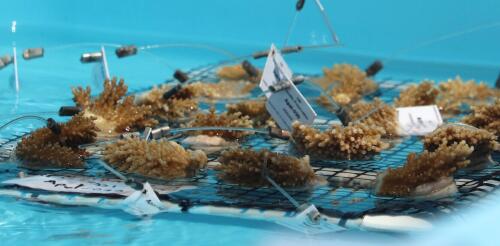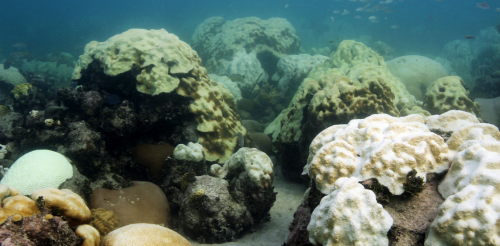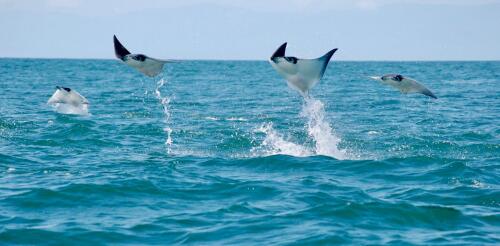Oceans
Armed with scrub brushes, young scuba divers took to the waters of Florida’s Alligator Reef in late July to try to help corals struggling to survive 2023’s extraordinary marine heat wave. They carefully scraped away harmful algae and predators impinging on staghorn fragments, under the supervision and training of interns from Islamorada Conservation and Restoration Education, or I.CARE. Normally, I.CARE’s volunteer divers would be transplanting corals to waters off the Florida Keys this time of year, as part of a national effort to restore the Florida Reef. But this year, everything is going in reverse. As water temperatures spiked in the Florida Keys, scientists from universities, coral reef restoration groups and government agencies launched a heroic effort to save the corals. Divers have been in the water every day, collecting thousands of corals from ocean nurseries along the Florida Keys reef tract and moving them to cooler water and into giant tanks on la...
The water off South Florida is over 90 degrees Fahrenheit (32 Celsius) in mid-July, and scientists are already seeing signs of coral bleaching off Central and South America. Particularly concerning is how early in the summer we are seeing these high ocean temperatures. If the extreme heat persists, it could have dire consequences for coral reefs. Just like humans, corals can handle some degree of stress, but the longer it lasts, the more harm it can do. Corals can’t move to cooler areas when water temperatures rise to dangerous levels. They are stuck in it. For those that are particularly sensitive to temperature stress, that can be devastating. A transplanted coral in the Port of Miami that was healthy in early 2023 had bleached in the warm water by July 11, 2023. NOAA/University of Miami I lead the Coral Program at the National Oceanic and Atmospheric Administration’s Atlantic Oceanogra...
If you’ve ever waded into the ocean for a swim and suddenly realized that the shore is getting farther away, not closer, you may have encountered a rip current. Common at beaches worldwide, these powerful currents flow from the shore toward the sea at speeds up to several feet per second. It’s important to know what rip currents are and how to look for them, because they are a leading cause of drownings in the surf zone near shore. According to one recent estimate, rip currents have accounted for 435 drownings in the U.S. since 2017. National Weather Service offices that serve coastal communities issue forecasts that predict where and when rip currents are likely to occur. Those forecasts draw on decades of research into the physics of rip currents. Many scholars, including our research group, are finding innovative ways to discover more about rip currents – including their important roles in coastal marine ecosystems. Rip currents a...
“Shark!” When you hear this word, especially at the beach, it can conjure up images of bloodthirsty monsters. This summer, my colleagues and I are eager to help the public learn more about these misunderstood, ecologically important and highly threatened animals and their close relatives – rays and chimaeras. As a marine biologist focused on conserving sharks, I want people to know that an estimated one-third of them are at risk of extinction. Second, there’s an amazing variety of species in an astounding variety of shapes sizes and colors, and many of them get very little attention. Here is an introduction to a group of fishes that are at extremely high risk of extinction, and also delightfully weird: the rhino rays, named for their elongated noses. Scientists tag endangered sawfish off Florida’s west coast to identify and protect their habitats and educate the public about them. Motley shapes Rhino rays a...
Many sharks and rays are known to breach, leaping fully or partly out of the water. In a recent study, colleagues and I reviewed research on breaching and ranked the most commonly hypothesized functions for it. We found that removal of external parasites was the most frequently proposed explanation, followed by predators chasing their prey; predators concentrating or stunning their prey; males chasing females during courtship; and animals fleeing predators, such as a ray escaping from a hammerhead shark in shallow water. We found that the highest percentage of breaches, measured by the number of studies that described it, occurred in manta rays and devil rays, followed by basking sharks and then by eagle rays and cownose rays. However, many other species of sharks, as well as sawfishes and stingrays, also perform this behavior. A breaching white shark surprises researchers off Cape Cod, Massachusetts. Why it matters It takes a lot of ene...




